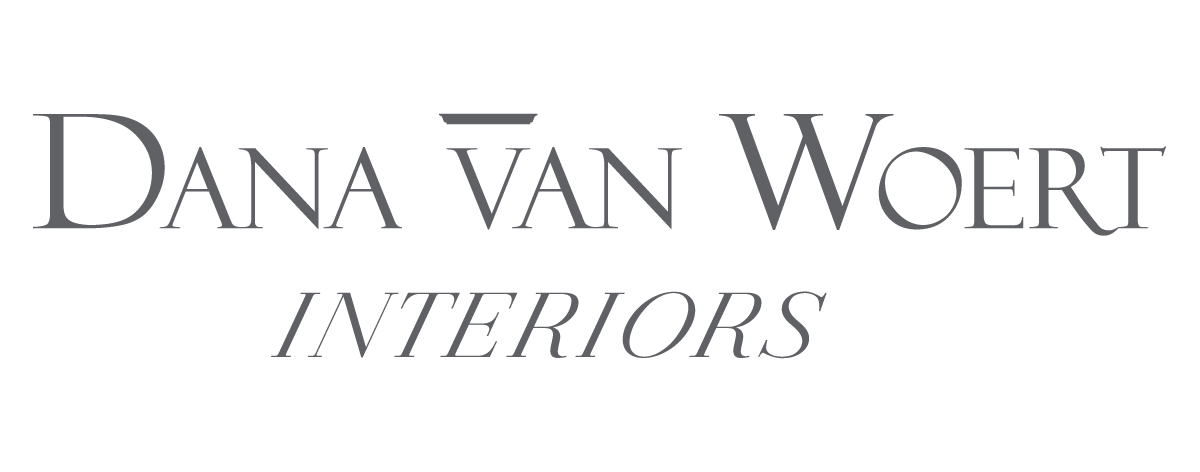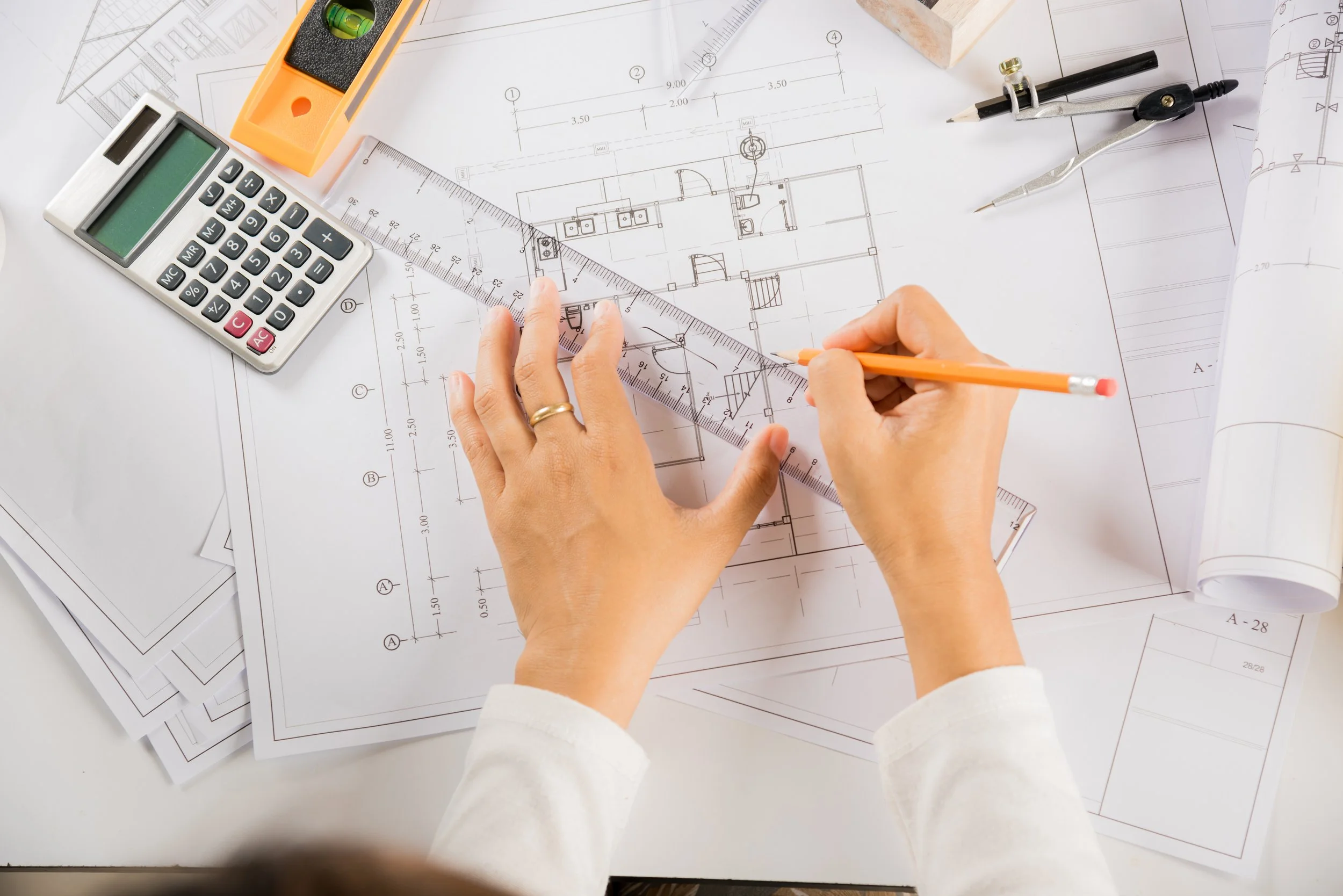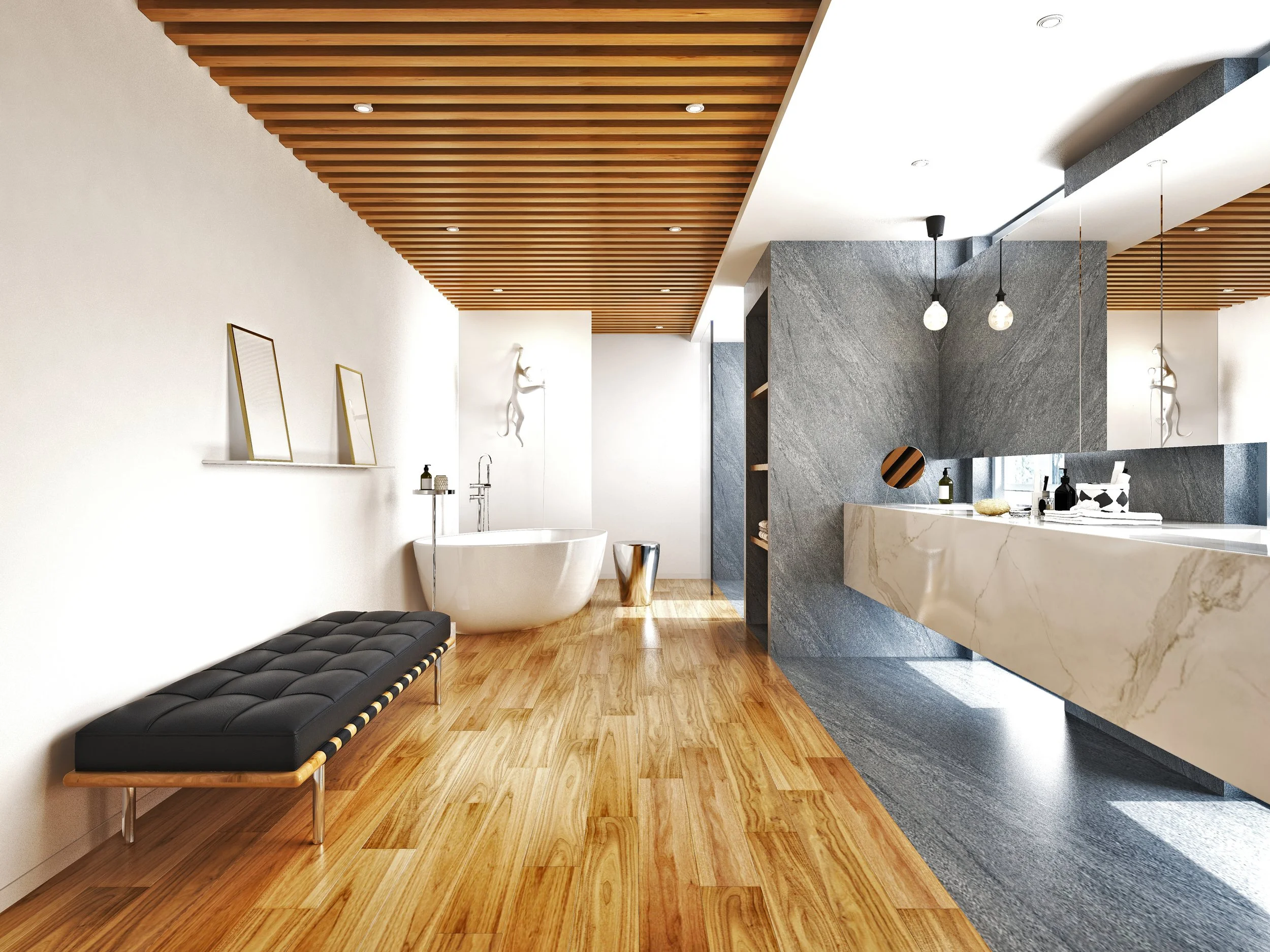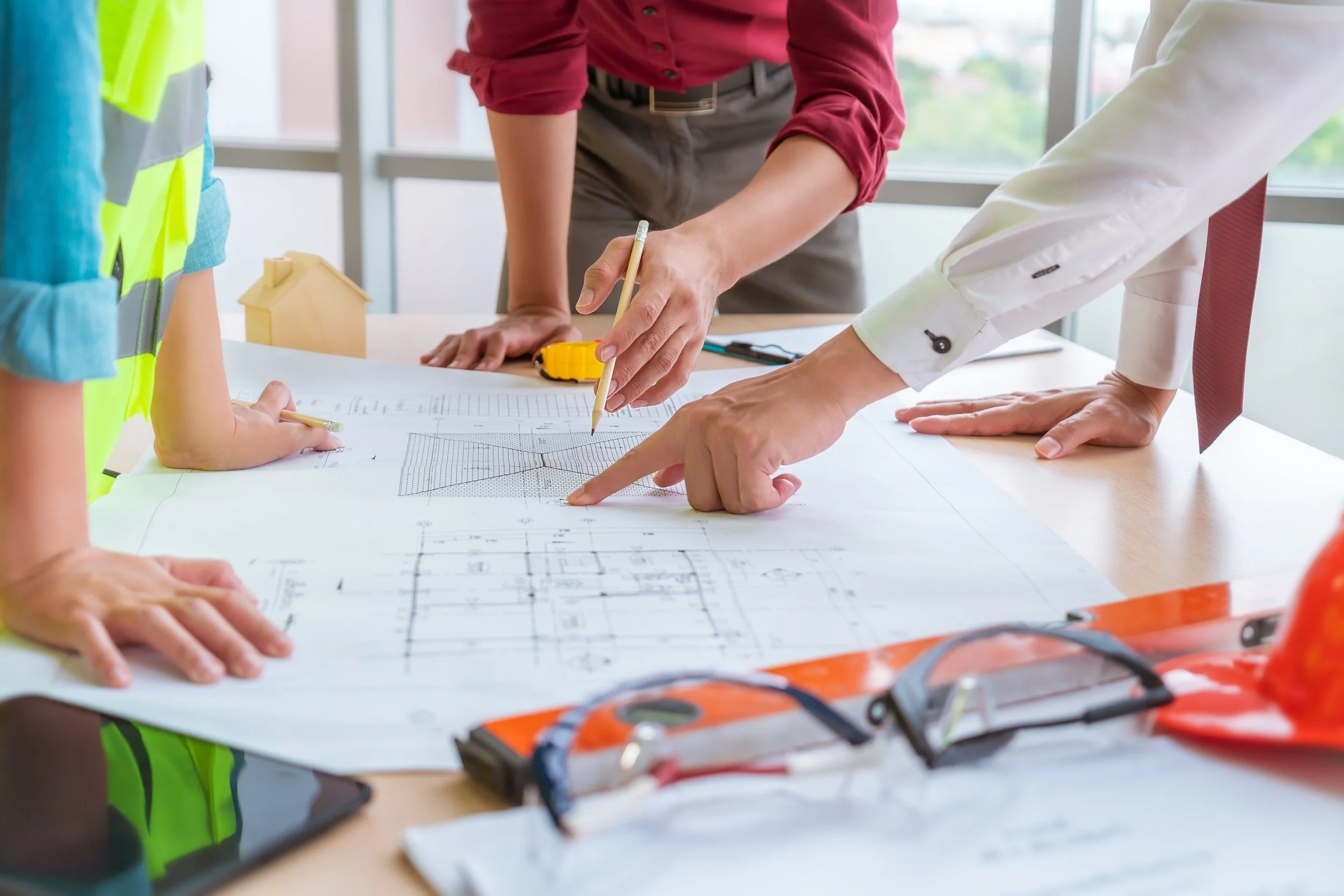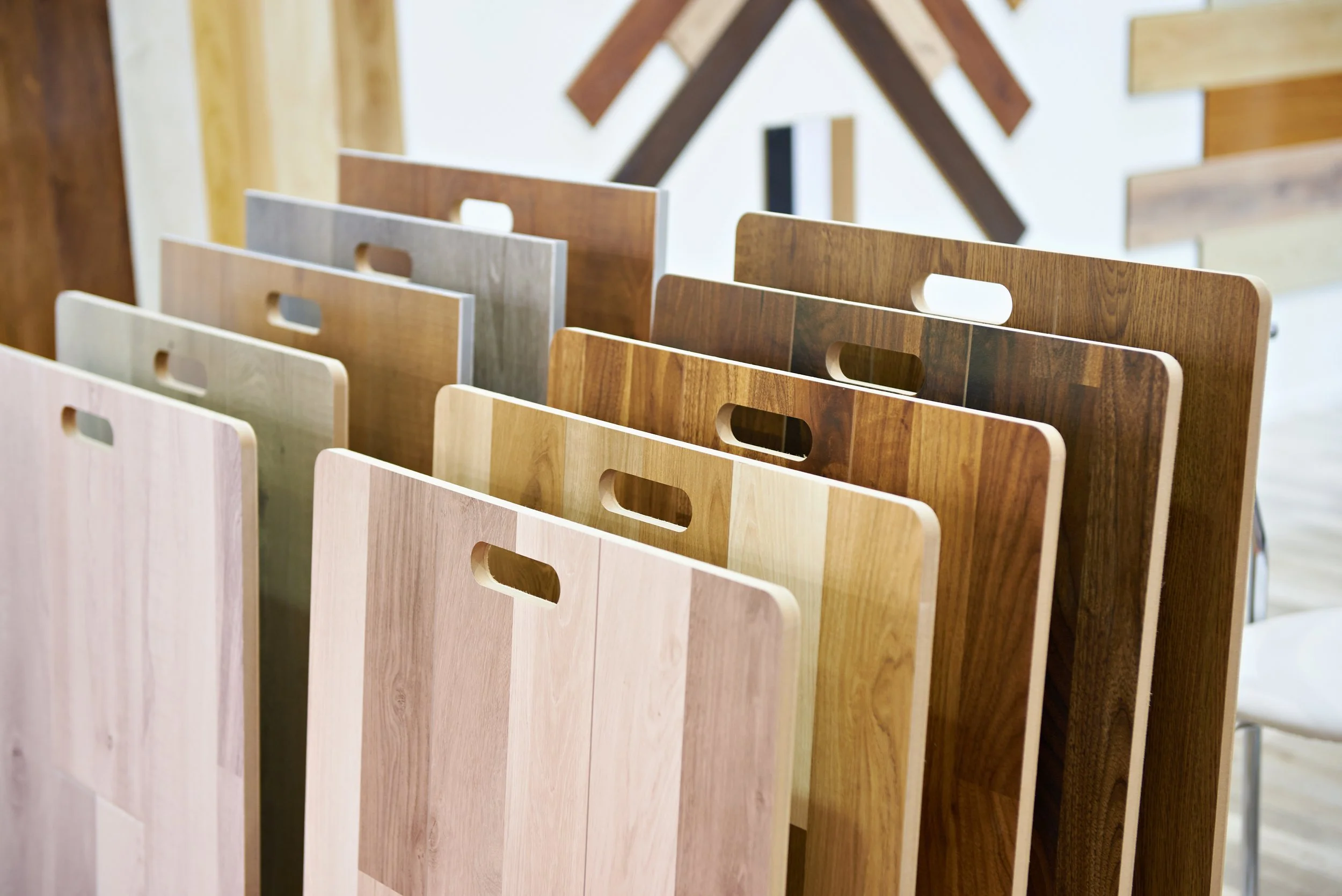Services included when working together.
There are almost always better outcomes when you hire an interior designer. Below is a list of possible services offered in the process & packages for interior design & project management at DVWI.
Design Services
Spatial Planning & Flow
Spatial planning and flow in interior design involves arranging physical spaces and elements to optimize functionality and aesthetics. It focuses on the strategic placement of elements to create a seamless and efficient layout. The goal is to enhance usability by ensuring logical connections between different areas, promoting easy movement, and visual harmony.
Examples
Floor Plans
Rearranging Appliance Layout
Adjusting Passageways, Walls, & Windows
Rearranging Furniture
Scale & Proportion Application
Scale and proportion refer to the careful consideration and balance of the size and visual weight of elements within a space to create a harmonious and aesthetically pleasing environment. Achieving a proper balance in scale and proportion is crucial for preventing a room from feeling overcrowded, empty, or unbalanced. Whether it's selecting furniture, lighting fixtures, or artwork, a keen understanding of scale and proportion is essential for creating a well-designed and balanced interior.
Examples
The Size Relationship of a Hood Over the Range
Quantity, Size, & Placement of Island Pendants in the Kitchen or Wall Sconces in the Bathroom
Color, Paint, Texture, Material, & Finish Theory
This theory revolves around the strategic integration of these elements to evoke specific emotions, establish a desired ambiance, and enhance the overall aesthetic of a room. The choice of these elements & finishes refines the overall look and feel, culminating in a well-balanced and thoughtfully designed interior that reflects both the practical and aesthetic aspirations of the space.
Examples
Stained Wood Cabinetry Paired With Painted Cabinetry
High-Gloss Paint Paired with Honed & Matte Finishes
Aged Patina Gold Light Fixture with Fabric Shade
Deep Colored Tile Paired with Light Stained Wood
Lighting Design
Lighting design plays a crucial role in interior design, transcending its utilitarian function to become a key element in shaping the ambiance and visual appeal of a space. A well-executed lighting plan enhances the function and overall aesthetic, highlighting architectural features, creating focal points, and influencing the mood within a room.
Different types of lighting, such as ambient, task, and accent lighting, are carefully integrated to meet both functional and aesthetic requirements. Thoughtful consideration of the color temperature, intensity, and direction of light allows designers to manipulate the perception of space, making it feel cozy, expansive, or dynamic. In essence, lighting design is an art that transforms interiors, turning them into visually engaging and harmonious environments.
Examples
Small recessed light over counter workspace (function) which then accentuates the upper cabinet (creating form)
Layered lighting such as sconces, pendants, and chandeliers in partnership with overhead lighting plam
Forms, Lines, & Harmony
The principles of forms, lines, and harmony play pivotal roles in shaping the visual appeal and functionality of a space. Forms refer to the shapes and structures present in the design, ranging from furniture to architectural elements. Lines, whether horizontal, vertical, or diagonal, guide the eye and contribute to the overall composition. Harmony, the integration of all design elements to achieve a pleasing and unified whole, is the ultimate goal.
Examples
Picture moulding
Tile or flooring lay patterns
Tambour, fluted, slat, or other paneling
Plants
Design Details
Design details encompasses thoughtful and meticulous elements that contribute to the overall aesthetic and functionality of a space. These details extend beyond the broad strokes of color schemes and furniture arrangements to include smaller, often overlooked elements that enhance the visual appeal and character of a room. Examples of design details may include intricate moldings, carefully chosen hardware, bespoke lighting fixtures, unique textiles, and personalized accents that reflect the homeowner's personality. Thoughtfully incorporating these details not only adds depth and sophistication to the design but also creates a cohesive and harmonious atmosphere.
Examples
Layering millwork products to create custom trim
Unique or antique lighting fixtures
Integrating a piece acquired from family or travel
Execute Services
Project Management
Project management in interior design is a crucial aspect that ensures the seamless execution of creative concepts within defined timelines and budgets. Interior design projects involve a myriad of tasks, including space planning, material selection, coordination with contractors and vendors, and of course client communication. Effective project management requires a combination of organizational skills, attention to detail, and the ability to navigate challenges that may arise during the process. Project managers in interior design play a pivotal role in overseeing the entire project lifecycle, from initial concept development to the final implementation.
Benefits
Full timelines managed & communicated
Minimized unforced errors through attention to detail & organized management
Solution-focused action from industry professional on your behalf
Contractor & Builder Partnerships
This relationship is pivotal in the successful execution of any design project. Collaboration between designer & builder ensures that the envisioned design not only meets aesthetic expectations but also adheres to structural and functional requirements. Contractors and builders bring technical expertise to the table, translating design concepts into tangible, well-constructed spaces. Clear communication and a strong working relationship between interior designer and contractor is essential to address any unforeseen challenges during the construction phase, fostering a collaborative problem-solving approach. The value of this symbiotic relationship is immeasurable, as it ensures that the creative vision of the client and designer integrates with the practical know-how of the builders and contractors.
Benefits
Collaboration & continued team approach with designer + contractor/builder throughout the project enables the creative vision to be executed with high quality & accuracy
Vendor Relationships
Having strong vendor relationships offers a myriad of benefits that contribute to the overall success of a project. Firstly, a reliable network of vendors provides access to a diverse range of high-quality materials, furnishings, and decor items, allowing us to offer unique and tailored solutions for you. Our strong relationship with vendors often leads to favorable pricing, discounts, and exclusive access to new products, enabling optimize budgets and cost effective design solutions. Our-established rapport with vendors fosters trust, loyalty, and mutual understanding, creating a supportive network that has lead to great outcomes.
Benefits
Discounts we receive get passed on to you
Ability for us to buy in bulk or straight from vendor for discounted prices
Access to remodeler/builder/designer showrooms
Skilled Trade Partnerships
The collaboration between interior designers and skilled trades professionals is paramount to the success of any design project. Interior designers possess a creative vision and a keen understanding of aesthetics, but it is the skilled trades professionals who bring those visions to life with their technical expertise. Whether it's carpenters, electricians, plumbers, or other trades, their input and craftsmanship are essential in executing the intricate details of a design. Moreover, these collaborations streamline the construction process, minimize errors, and often lead to innovative solutions to design challenges.
Benefits
Correct translation of design details
Trusted problem-solving partner
Quality control
